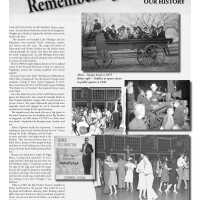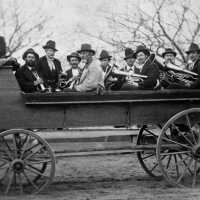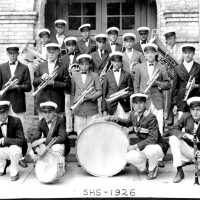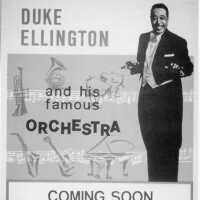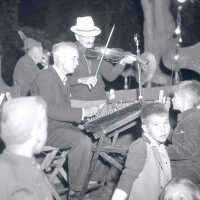Music and Big Bands
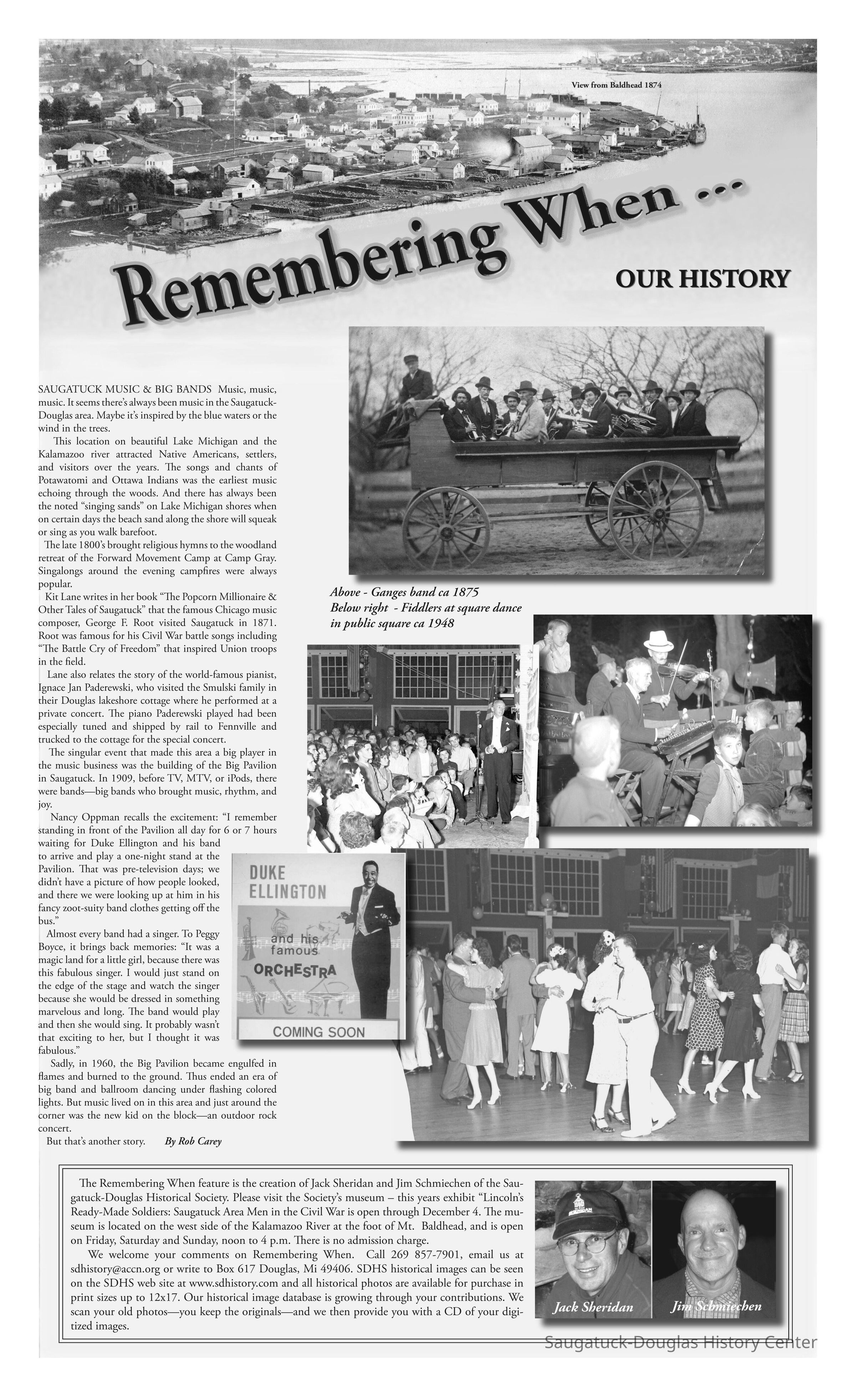
2021.87.45
SAUGATUCK MUSIC & BIG BANDS Music, music, music. It seems there’s always been music in the Saugatuck-Douglas area. Maybe it’s inspired by the blue waters or the wind in the trees. This location on beautiful Lake Michigan and the Kalamazoo river attracted Native Americans, settlers, and visitors over the years. The songs and chants of Potawatomi and Ottawa Indians was the earliest music echoing through the woods. And there has always been the noted “singing sands” on Lake Michigan shores when on certain days the beach sand along the shore will squeak or sing as you walk barefoot. The late 1800’s brought religious hymns to the woodland retreat of the Forward Movement Camp at Camp Gray. Singalongs around the evening campfires were always popular. Kit Lane writes in her book “The Popcorn Millionaire & Other Tales of Saugatuck” that the famous Chicago music composer, George F. Root visited Saugatuck in 1871. Root was famous for his Civil War battle songs including “The Battle Cry of Freedom” that inspired Union troops in the field. Lane also relates the story of the world-famous pianist, Ignace Jan Paderewski, who visited the Smulski family in their Douglas lakeshore cottage where he performed at a private concert. The piano Paderewski played had been especially tuned and shipped by rail to Fennville and trucked to the cottage for the special concert. The singular event that made this area a big player in the music business was the building of the Big Pavilion in Saugatuck. In 1909, before TV, MTV, or iPods, there were bands—big bands who brought music, rhythm, and joy. Nancy Oppman recalls the excitement: “I remember standing in front of the Pavilion all day for 6 or 7 hours waiting for Duke Ellington and his band to arrive and play a one-night stand at the Pavilion. That was pre-television days; we didn’t have a picture of how people looked, and there we were looking up at him in his fancy zoot-suity band clothes getting off the bus.” Almost every band had a singer. To Peggy Boyce, it brings back memories: “It was a magic land for a little girl, because there was this fabulous singer. I would just stand on the edge of the stage and watch the singer because she would be dressed in something marvelous and long. The band would play and then she would sing. It probably wasn’t that exciting to her, but I thought it was fabulous.” Sadly, in 1960, the Big Pavilion became engulfed in flames and burned to the ground. Thus ended an era of big band and ballroom dancing under flashing colored lights. But music lived on in this area and just around the corner was the new kid on the block—an outdoor rock concert. But that’s another story. By Rob Carey
Remembering When
Winthers, Sally
2021.87
Sheridan, John "Jack" O. 1938-
Donation
Digital data in CatalogIt
Sheridan, John "Jack" O. 1938-Schmiechen, James A.Lane, Kit 1939-2024Root, George Frederick 1820-1895Smulski FamilyPaderewski, Ignacy Jan (1860-1941)Ellington, DukeOppman, NancyBoyce, Peggy (Webster) 1932-2021Big Pavilion 1909-1960Presbyterian Camp/Camp Gray/Forward Movement Park 1899-2014
Local Observer
12/11/2021
11/18/2023

